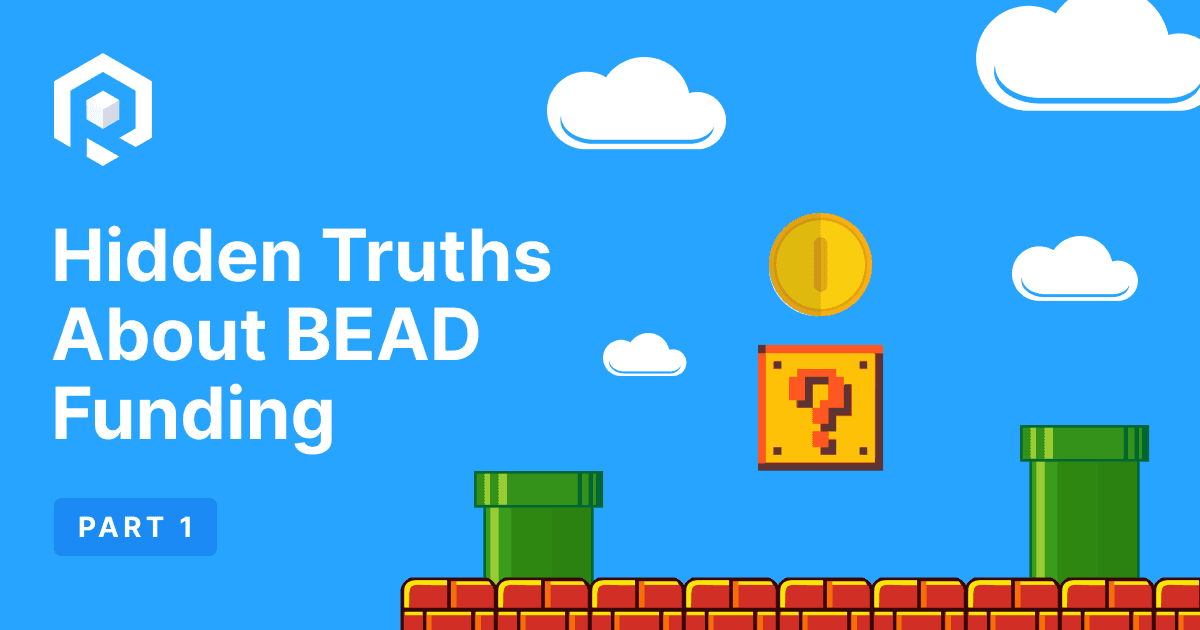
BEAD Hidden Truth: Your rural electric co-op is (probably) sitting on a matching funds goldmine
3 min read

Rural electric cooperatives, or RECs, have a once-in-a-lifetime opportunity to participate in BEAD, a $42.5 billion broadband grant program aimed at connecting families to affordable, reliable broadband service.
The stakes couldn’t be higher. If you don’t apply for BEAD, others will and they might not have your members’ best interests in mind. Co-ops like yours can, should and frankly must apply for your share of BEAD.
Many aspects of BEAD seem daunting to RECs and co-ops like yours have built in advantages in applying for America’s largest and quite possibly last investment in broadband infrastructure.
While many aspects of BEAD look daunting, RECs and Co-ops like yours have several unique built-in advantages when it comes to applying for your share of our nation’s largest-ever broadband bet.
BEAD grants, like most government broadband grant programs, require matching funds from other sources in order to qualify for grant funding.
In order to qualify for BEAD, applicants must have at least 25% matching funds in most states and cases. It might not be known, however, that these matching funds don’t need to provided in cash or bringing 100% of the equity or credit and lending to the table.
This leads to our first BEAD Hidden Truth of Matching Funds.
Your built-in goldmine
Rural electric cooperatives, or RECs, have a once-in-a-lifetime opportunity to use existing infrastructure as matching funds through the BEAD program.
For more than 90 years, RECs have served as great stewards of public resources building physical plants, right of ways and service delivery infrastructure for electricity to thousands of member homes.
That prior investment is valuable – literally – as an eligible in-kind BEAD matching fund contribution.
In fact, you can count the value of your existing right of way, infrastructure, and make ready cost savings compared to what greenfield actors would need to invest in order to replace what you’ve already built.
In some cases, the total value of those assets would exceed the minimum 25% matching fund contribution out of the gates.
If your rural electric cooperative, for example, is applying for a $100 million BEAD award, it needs to have $25 million, or 25%, in matching funds in order to qualify.
Initially, you might dismiss this as possible since you may not have $25 million in liquid assets or feel comfortable about acquiring a $25 million loan.
Let’s say, however, that your electric plant is appraised at $30 million, by a qualified right-of-way appraiser. You now possess 30% of the matching funds for your BEAD award.
Perhaps, your cooperative decides that it will offer 50% off for the first 10,000 homes to sign up for a period of two years. This comes at a cost of $5 million to the cooperative, but under BEAD guidelines, it is classified as an “in-kind contribution” that can be used towards matching funds.
Another potential source of matching funds can be through a vendor providing a discount for the project. If a vendor provides a 20% discount on equipment, the difference between the original price and the discounted price can be counted towards matching funds.
In the hypothetical outlined above, using these three sources alone would result in $40 million, or 40%, of necessary matching funds. And that’s before you even have to think about liquid assets or potential loans.
It’s not a loan which means no collateral necessary
The process begins with applicants acquiring a right-of-way appraisal from a private valuation entity to assign the value of your assets and count that in your application.
This is not the same as pledging your assets as collateral against a loan, which was historically required in prior broadband funding programs and REC broadband consortium schemes.
Utilizing this goldmine at your disposal is critical because if you don’t apply for BEAD funds, your competition will.
You can’t afford to lose in BEAD
Losing out on BEAD is bigger than any missed business opportunity because it won’t be just your loss, but instead a loss to the families and communities you serve.
You owe it to your customers to ensure that taxpayer funding is best spent by providers eager to help their communities close the digital divide.

